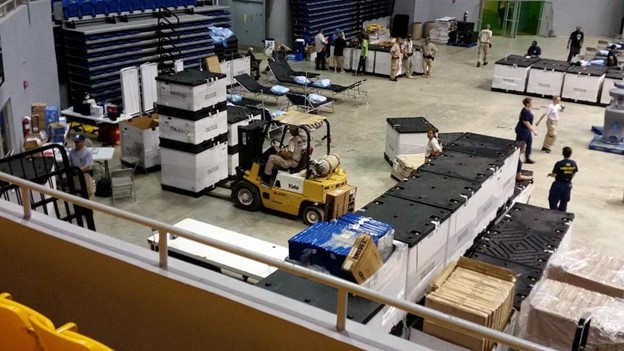
When it comes to medical device design, adhesives are fundamental. They determine whether a device can perform reliably, comfortably and...

In the quest for leaner operations, the manufacturing sector increasingly focuses on trimming excess from inventory practices. It’s not uncommon for businesses to allocate more resources than necessary toward inventory management and stock maintenance without necessarily being aware that they are doing so.
Inventory programs are becoming pivotal for businesses eager to pare down expenses and boost productivity — two essential objectives in the competitive health and safety industry. If your inventory management isn’t already operating under a structured program, there’s no better time than now to consider and implement such a program.
In this guide, the material specialists at Sur-Seal will detail the three most prevalent inventory programs, compare their advantages for your enterprise, and guide you through the selection process. These programs are instrumental in lowering costs and refining operational efficiency.
While inventory programs and inventory systems may seem interchangeable due to their similar naming structure, they serve distinct roles and purposes.
In this article, we’ll focus on inventory programs. Let’s explore five common types of inventory programs and their respective perks:

The Min-Max program streamlines your inventory management by establishing calculated thresholds of material stocks based on predictive analytics and usage patterns.
Features & Benefits:
Related article: Inventory Management 101: Min-Max Inventory Calculation
Kanban programs synchronize supply with consumption, delivering a just-in-time inventory replenishment system that’s both efficient and responsive.
Features & Benefits:
Related article: What is a Kanban Inventory Management System?
Safety stock programs provide a buffer of inventory to protect against variability in demand and supply, ensuring uninterrupted operations.
Features & Benefits:
Related article: Safety Stock Formula: How to Calculate and Use
Supplier-Owned & Managed Inventory (SOMI) programs take the concept of safety stock further by entrusting suppliers with the finished parts inventory, ready for deployment.
Features & Benefits:
Related article: SOMI – Supplier Owned and Managed Inventory Model
Sur-Seal excels in crafting customized inventory programs that align perfectly with the unique demands and workflows of your business. This can include a hybrid approach that combines various program models as well as entirely new systems specific to the unique demands of your organization.
Features & Benefits:

Integrating inventory programs into your operations is a strategic move aimed at financial prudence and enhanced efficiency. These programs offer many advantages, collectively contributing to a leaner, more agile business model.
Here’s a detailed look at how they can reshape your material spending and management:
Inventory programs are essential in preventing production halts due to material shortages, ensuring a continuous manufacturing process. This reliability translates into uninterrupted productivity and cost savings.
The shift toward lean inventory is not a trend but a necessity. Excess stock can incur substantial carrying costs. Implementing inventory programs allows for “just in time” delivery, ensuring you have exactly what you need, precisely when you need it, without the financial burden of surplus material.
Blanket orders offer a strategic approach to purchasing, aligning delivery schedules with your production needs. By scheduling staggered releases, your business can avoid the unnecessary capital freeze and storage expenses associated with bulk inventory. This coordination streamlines supply chain logistics and reduces financial overhead for your enterprise and suppliers.
Each of these inventory strategies works to refine your material management, freeing up capital and space while safeguarding the timely fulfillment of your production requirements. The snowballing effect is a robust, cost-effective, and efficient operation that enhances your competitive stance in the market.

Selecting the ideal inventory program for your business is nuanced and demands a collaborative approach with your material supplier. An in-depth consultation with your supplier is crucial — they can offer various options and provide guidance tailored to your specific needs.
In industries like health and safety, where timing is critical, having an optimal stock of parts and materials is not a luxury — it’s a necessity. The right inventory program is not just a cost-saving measure; it’s a pathway to enhance service delivery and customer satisfaction.
With a thorough understanding of the unique features and advantages of each inventory management system, you stand ready to evaluate and compare the available options critically and hold collaborative discussions with key stakeholders in the decision-making process. Remember, there may be a single most fitting program — or a combination thereof — that aligns with your business’s operational requirements and strategic objectives.
By exploring these diverse inventory programs and engaging in a thoughtful dialogue with your material source, you’re on your way to making a decision that is both informed and aligned with the unique dynamics of your organization.